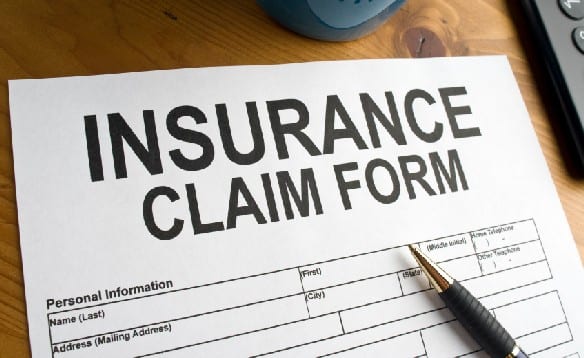Every business entity keeps sufficient stock as per the need and size of its respective business for smooth running of the business, but at the same time risk of loss by fire or by means is also there. To safeguard the businesses from any unforeseen circumstantial loss, most of the business entities buy insurance policy, which covers loss of stock (by fire) — is known as stock policy.
In consideration of the premium, insurance company takes the responsibility to compensate — if any loss occurs by fire or by other means, applicable under the insurance terms. It is in the best interest of the firm to take fire insurance policy because it covers wide range of losses (by fire) including Building damage, Furniture and Fixture loss, Plant & Machinery destruction, etc.
Following are the important points to be considered for the estimation of stock −
Gross Profit on Sale
Gross profit is calculated by deducting net sales from the cost of goods sold. To know the gross profit of the last year, “Trading” account of the last year should be referred.
Memorandum Trading Account (for Current Year)
In case of fire, Memorandum Trading account is required to find the value of estimated Stock. It is prepared with the help of Gross Profit ratio of the last year, Opening Stock, Purchase, Sale, and Direct Expenses.
Value of Salvaged Stock
Value of stock as calculated at step-2 will be reduced by the value of salvaged stock to arrive at the value of Insurance Claim.
Other Important Points
· In case, where stock is not valued at the cost, first it will be valued at the cost in the last year trading account and then in the memorandum account of the current year. For example, if it is given that stock of Rs. 80,750 is valued at 85% of the cost in the last year, then first it should be valued as (80,75085×100)=95,000(80,75085×100)=95,000 in the last year and then in the current year memorandum Trading account.
· Cost of the sample given free of cost or withdrawal of stock by proprietor or partner of the firm for personal use, it should be adjusted in the Trading Account of the last year as well as in the current year’s memorandum trading account.
· In case, where gross profits of the last several years are given, average gross profit should be taken to determine the gross profit of the current year. However, in case where clear upward trend of the gross profit or downward trend of the gross profit is identified, weighted average gross profit or reasonable trend of upward or downward trend should be applied to determine the gross profit of the current year.
· To find out the gross profit on normal sales, poor selling sale should be eliminated from the sale of the current year. Similarly, poor selling items should be eliminated from the opening and closing stock of the last years to prepare the trading account of the current year.
Average Clause
An average clause is applied to find out the value of a claim where value of the stock on the date of fire is more than the value of insured stock. Average clause is applied by the insurance companies to discourage the under insurance of stock or any other assets.
Following illustration help you to understand it in a better way −
Suppose, value of insurance policy is Rs. 1,500,000 and at the date of fire, value of stock in hand is Rs1,800,000, out of which approx. worth of 1,200,000 stock is destroyed, then the value of the claim admitted will be −
ValueofClaim=1,500,0001,800,000×1,200,000=1,000,000ValueofClaim=1,500,0001,800,000×1,200,000=1,000,000
Value of stock of Rs. 1,200,000 will not be admissible to the insured, rather admissible claim will be Rs. 1,000,000.
Illustration
Fire occurred on the business premises of ‘Style India’ on 1st April, 2014 and most of the stock destroyed. Please ascertain the insurance claim from the following given particulars −
| Particulars | Amount (Year 2013) | Amount (01 Jan to 31st March 2014) |
| Sale | 2,500,000 | 750,000 |
| Purchases | 1,800,000 | 350,000 |
| Opening Stock (01-01-2013) | 270000 | |
| Closing Stock (31-12-2013) | 498,750 | |
| Direct Expenses (Freight & wages) | 150,000 | 30,000 |
- Stock as on 01-01-2013, valued 10% less at the cost.
- Stock as on 31-12-2013 value 5% more at the cost.
- Value of stock salvaged Rs. 45,000.
- Insurance policy (for fire) was for Rs. 300,000.
Solution
Trading Account of M/s Style India
(For the year ending on 31st December, 2013)
| Particulars | Amount | Particulars | Amount |
| To Opening Stock{270,00090×100}{270,00090×100}To PurchasesTo Direct ExpensesTo Gross Profit (29%) | 300,0001,800,000150,000725,000 | By SalesByStock=500,000105×100ByStock=500,000105×100 | 2,500,000475,000 |
| 2,975,000 | 2,975,000 |
Memorandum Trading Account of M/s Style India
(Up to 01-4-2014)
| Particulars | Amount | Particulars | Amount |
| To Opening StockTo PurchasesTo Direct ExpensesTo Gross Profit(29% of 750,000) | 475,000350,00030,000217,500 | By SalesBy Stock (Balancing Figure) | 750,000322,500 |
| 1,072,500 | 1,072,500 |
Value of Stock= Rs. 322,500
Less: Stock Salvage= Rs.45,000
Insurance Claim to be lodged will be −
ValueofClaim=300,000322,500×277,500=258,140ValueofClaim=300,000322,500×277,500=258,140
Here an average clause will be applied because the value of insurance policy (Rs.300,000) is less than the value of stock (Rs. 322,500) on the date of fire.
Consequential Loss Insurance
A normal fire policy only indemnifies loss of stock or assets, and fails to insure any loss of profit suffered by the concerned business. Therefore, a consequential loss policy should be taken to cover the Loss of profit, Loss of Fixed expenditure, etc.
Following are the important terms used in loss of profit policy −
· Insured Standing Charges − Salaries to staff, Rent rates & Taxes, Wages to skilled workers, Auditors’ fees, Directors’ fees, Advertisement Expenses, Travelling Expenses, Interest on debentures, and unspecified expenses (not more than 5% of the specified expenses) are the charges that have to mention on the policy form at the time of buying policy (so that all charges get insured).
· Turnover − Turnover includes sold goods or services for which amount is payable; it also needs to be insured.
· Annual Turnover − Turnover for the last 12 months, immediately preceding to the date of fire.
· Standard Turnover − Standard turnover means, turnover for the period corresponding with the indemnity period during the preceding accounting year. It also needs to be adjusted to notice the trend during the accounting year, in which incident took place.
· Gross Profit − It is calculated as
Gross profit = Net profit + Insured standing charges
· Net Profit − To calculate net profit — profit (excluding tax), insured standing charges, other charges, depreciation, and other provisions of such kind need to be adjusted.
· Indemnity Period − Maximum twelve months (from the date of damage), during which the result of the business affected due to damage. Period of indemnity is selected by the insured person.
Computation of Claim
Following steps need to be taken to compute insurance claim on the loss of the profit, which is occurred due to dislocation of the business −
Short Sale − Short sale means loss of sale due to the incident of fire and subsequent dislocation of the business. The difference of standard turnover and the actual turnover during the period of indemnity is called short sale. It is illustrated in the following example.
Example
Calculate short sale according to the particulars given below −
| Date of Fire occurs | 01-06-2013 |
| Period of dislocation of business | 4 months |
| Standard Sale | 500,00 |
| Increased trend | 15% |
| Actual Sale | 300,000 |
Solution
Computation of Short Sale
| Standard turnover (Rs. 50,000 + 15%)(A) | 575,000 |
| Less: Actual Sale(B) | 300,000 |
| Short Sale(A-B) | 275,000 |
Rate of Gross Profit − It is calculated as
RateofGrossProfit=NetProfit+InsuredStandingChargesTurnover×100RateofGrossProfit=NetProfit+InsuredStandingChargesTurnover×100
Note − All figures given above are related to the last accounting year.
InCaseofLoss=InsuredStandingCharges−NetLossTurnover×100InCaseofLoss=InsuredStandingCharges−NetLossTurnover×100
Note − All figures given above are related to the last accounting year.
In case where all the standing charges are not insured, amount of net loss need to reduce as −
=InsuredStandingChargesAllstandingCharges×NetLoss=InsuredStandingChargesAllstandingCharges×NetLoss
Loss Due to Short Sale − It is calculated as
LossduetoShortSale=ShortSale×RateofGrossprofitLossduetoShortSale=ShortSale×RateofGrossprofit
Increased Cost of Working − Increased cost of working means, certain additional expenses those have to be incurred by insured person to keep the business in running condition during the indemnity period.
Least of following figures will be considered as increased cost of working −
=NetProfit+InsuredStandingChargesNetProfit+AllstandingCharges×IncreasedCostofWorking=NetProfit+InsuredStandingChargesNetProfit+AllstandingCharges×IncreasedCostofWorking
Illustration
Calculate permissible increased cost of working with following given particulars −
| Net Profit | 45,000 |
| Insured Standing Charges | 25,000 |
| Uninsured Standing Charges | 25,000 |
| Short Sale | 100,000 |
| Rate of Gross Profit | 15% |
| Increased Working Expenses | 10,000 |
| Short sale avoided through Increased Cost of Working | 50,000 |
Solution
Least of the following will be permissible increased cost of working −
=NetProfit+InsuredStandingChargeNetProfit+AllstandingCharges×IncreasedCostofWorking=NetProfit+InsuredStandingChargeNetProfit+AllstandingCharges×IncreasedCostofWorking
=45,000+25,00045,000+50,000×10,000=7,368=45,000+25,00045,000+50,000×10,000=7,368
Shortsaleavoided×RateofGrossprofit=50,000×15%=7,500Shortsaleavoided×RateofGrossprofit=50,000×15%=7,500
So, Rs. 7,368 will be permissible claim of the increased cost of working.
Note − Overall permissible limit of claim for short sale + increased cost of working cannot exceed the following limit.
Maximumpermissiblelimitofclaim=StandardSale×RateofGrossprofitMaximumpermissiblelimitofclaim=StandardSale×RateofGrossprofit
Saving in Expenses − Saving in expenses due to fire will be deducted from the amount calculated as above.
Average Clause − In case where the value of sum insured is less than the value of policy for which policy have been taken, average clause will be applied as applied for the stock insurance (above).
Accounting Entries
In case of loss of stock
| Insurance company A/cDrTo Stock Damaged A/cTo Stock Destroyed A/c(Being Claim admitted for stock destroyed and stock damaged) |
| Stock destroyed A/cDrStock Damaged A/cDrTo Trading A/c(Being actual cost of stock destroyed and stock damaged to trading account) |
| Bank A/cDrTo Stock Damaged A/c(Being realization made on sale of damaged Stock) |
| Note − Difference of stock destroyed account and damaged account will be transferred to Profit & Loss account) |
In case of loss of Profit
| Insurance company A/cDrTo Profit & Loss A/cDrTo Profit & Loss Suspense A/c(Being Loss of profit for next year) |
| Bank A/cDrTo Insurance Company A/c |


